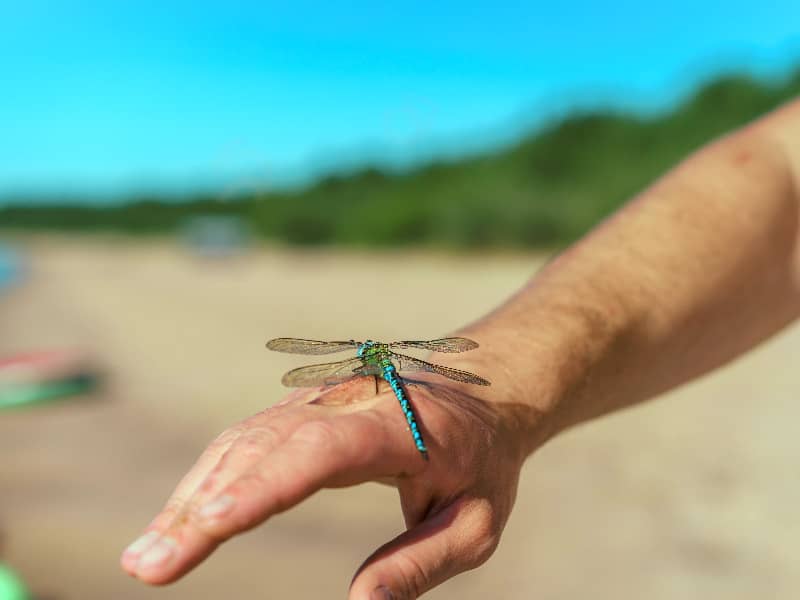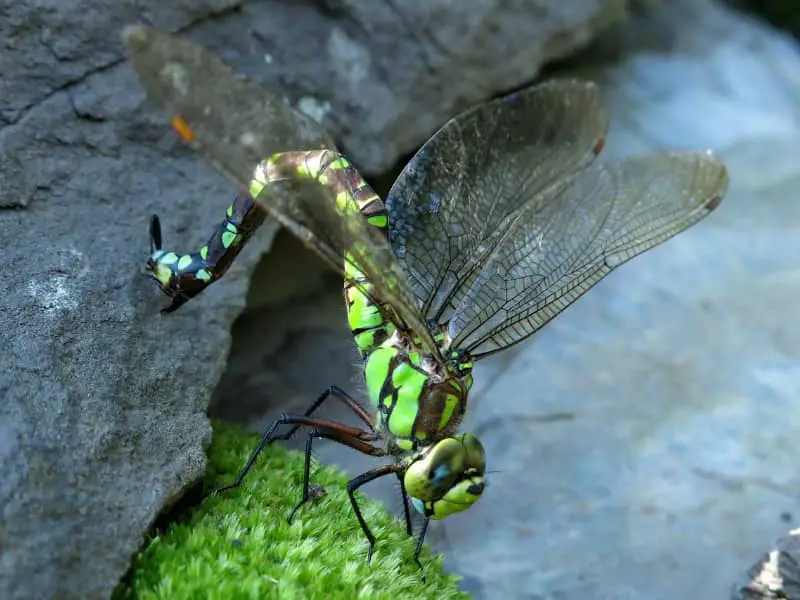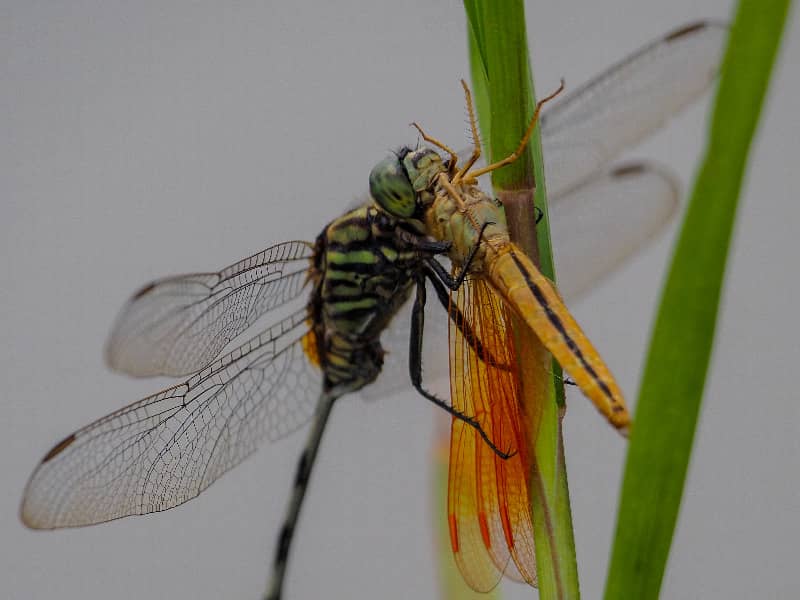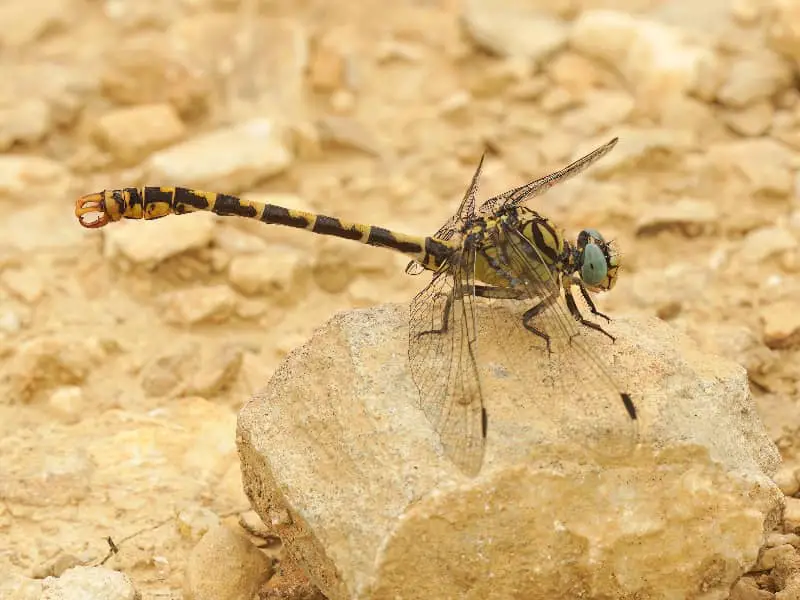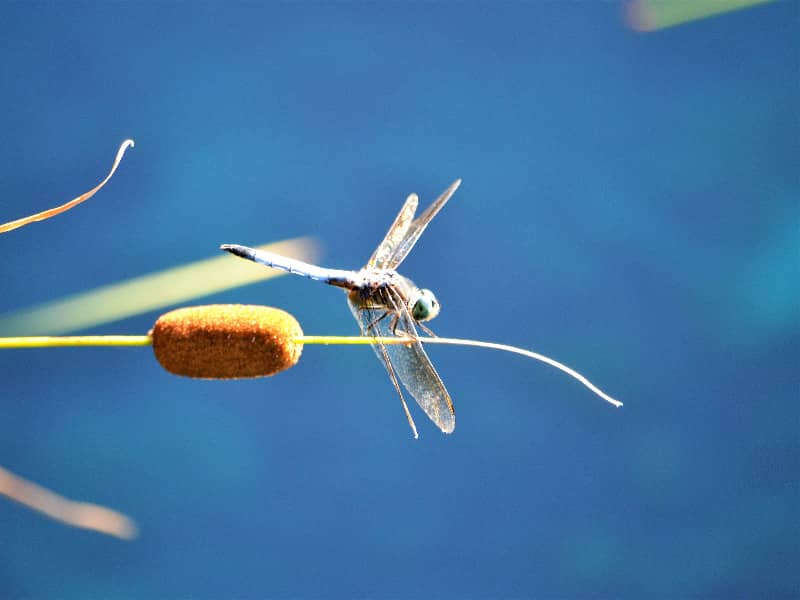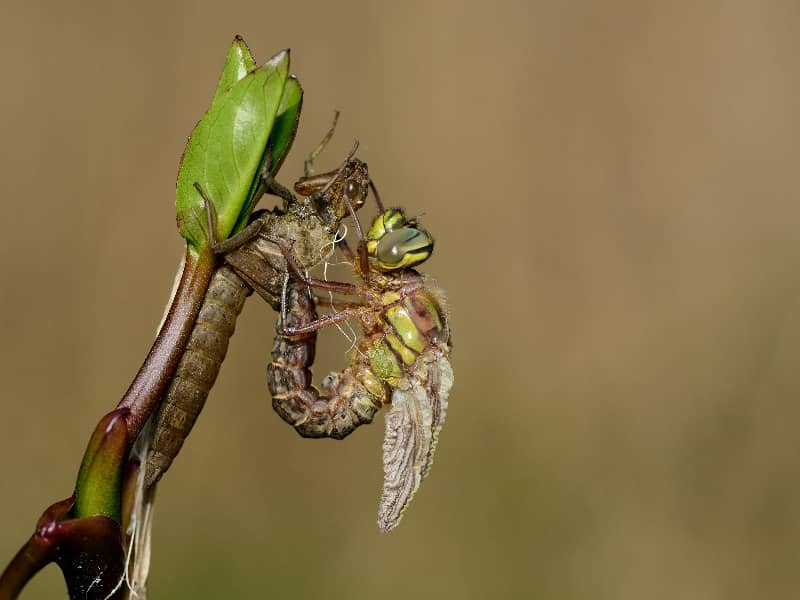
Dragonfly babies - A journey from larva to flight
Dragonflies are fascinating insects that are often found near bodies of water. Their elegant flight maneuvers and brilliant colors attract many people. But did you know that dragonflies go through an amazing journey from larva to adult insect before their stunning flight? In this article, we will look at baby dragonflies and explore the fascinating development of these fascinating creatures.
- Dragonfly babies - A journey from larva to flight
- The life cycle of the dragonfly
- The larval stage of the dragonfly babies
- Eating habits and growth of dragonfly babies
- The transformation from baby dragonfly to adult dragonfly
- The process of creation of dragonfly babies
- Dragonfly babies as predators
- Dragonfly babies in different habitats
- Conclusion: The wonder and beauty of dragonfly babies
- FAQ
The life cycle of the dragonfly
The life cycle of a dragonfly consists of several stages: Egg, larva, pupa and adult dragonfly. In this article we will focus on the larval stage, where the dragonfly babies play an important role.
The larval stage of the dragonfly babies
The larval stage of baby dragonflies is one of the longest and most crucial stages in their life cycle. The larvae hatch from eggs and spend most of their lives in the water. They have a unique body shape that helps them move around in the water. Their bodies are long and slender, with six legs and a long tail that serves as their propeller.
The larvae are also equipped with special respiratory organs called gills, which enable them to breathe underwater. They feed on small insects, worms and other aquatic life. As they grow, the larvae shed their skin several times and gradually take on the form of adult dragonflies.
Eating habits and growth of dragonfly babies
Baby dragonflies are predators and have a pronounced appetite. They are known to eat a large number of prey, which helps them grow quickly and increase their body size. Their eating habits are impressive as they are able to catch and crush their prey with their strong jaws. They are also known to catch their prey with the help of their long and sticky tongues.
The growth of the dragonfly babies is impressive. Within a few months they can increase their size tenfold. During this growth phase, they shed their skin several times and adjust their body size to their growing needs.
The transformation from baby dragonfly to adult dragonfly
After the dragonfly babies have completed their growth phase, the next step in their development begins - metamorphosis into the adult dragonfly. The larvae climb out of the water on plants or other surfaces and shed their skin one last time. They then become pupae, which are in a protective shell.
During pupation, a remarkable transformation takes place. The dragonfly's body shape changes dramatically and the wings develop. Finally, the adult dragonfly hatches from the pupa and unfolds its wings. It is now ready to take to the skies and begin its adult life as a dragonfly.
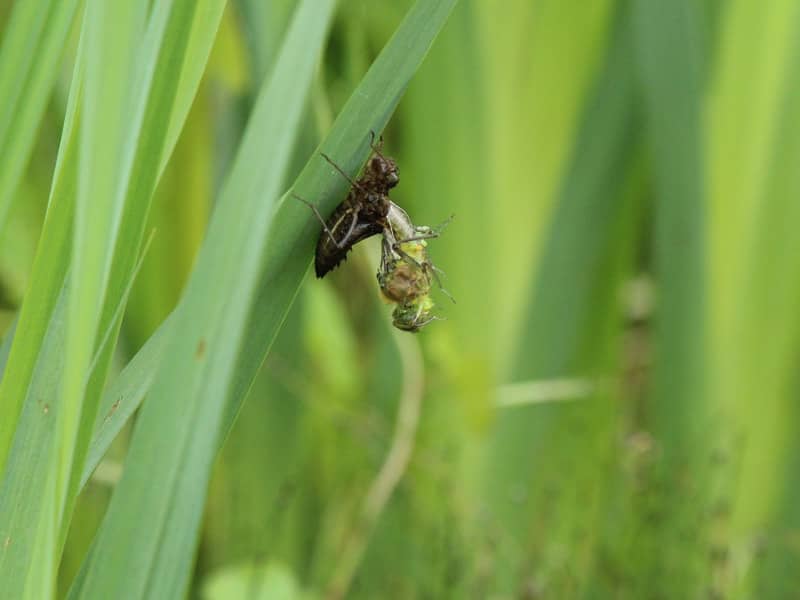
The process of creation of dragonfly babies
The creation of dragonfly babies begins with the mating of adult dragonflies. The females lay their eggs in water bodies where the larvae can thrive. Egg laying often occurs near aquatic plants or other structures that provide shelter for the larvae.
Once the eggs are laid, the larvae hatch after some time and begin their life cycle in the water. During their development, the larvae depend on the water as a habitat, as they can find food there and protect themselves from enemies.
Dragonfly babies as predators
Baby dragonflies are fearless predators in their habitat. They use their keen senses and quick reflexes to hunt and capture their prey. Their jaws are strong enough to grasp and crush prey. They are also able to move quickly to surprise and catch their prey.
Baby dragonflies play an important role in the ecosystem by helping to control populations of other insects. They eat a variety of pests, including mosquito larvae and other insects that can be potentially harmful.
Dragonfly babies in different habitats
Dragonfly babies can be found in a variety of habitats as long as there is water. They colonize ponds, lakes, rivers, and even temporary bodies of water such as puddles. Each habitat provides different conditions and resources for the development of the dragonfly babies.
In still waters such as ponds, baby dragonflies often have an abundant food source and can hide in aquatic plants. In rivers and lakes, they may have to travel greater distances to find food and protect themselves from predators.
Conclusion: The wonder and beauty of dragonfly babies
The development of baby dragonflies from larva to adult insect is a fascinating process that shows us the diversity and adaptability of nature. Their unique body shape, eating habits and amazing transformation make them fascinating creatures.
Baby dragonflies also play an important role in the ecosystem, helping to control populations of other insects. Their role as predators is crucial for the balance of nature.
So, the next time you see a dragonfly, remember that it has gone through an amazing journey from larva to flight. Enjoy the wonder and beauty of this fascinating creature.
FAQ
1. how long does it take for a dragonfly to hatch from the chrysalis?
The pupation of a dragonfly usually takes about a month, depending on the species and environment. Once the dragonfly is ready to hatch from the pupa, the process can take only a few minutes.
2. what do baby dragonflies eat?
Dragonfly babies are predators and feed on small insects, worms and other aquatic life. They are known to eat a large number of prey to support their growth.
3. how long does the larval phase of the dragonfly babies last?
The larval phase of dragonfly babies can last from several months to several years, depending on the species and environmental conditions. During this time, the larvae grow and molt several times to adjust their body size.
Author
Last posts
- 15. March 2024ChickensRobuster Kunststoffzaun für Hühner – Tipps
- 13 October 2023DragonfliesBlue feather damselfly
- 12 October 2023DragonfliesYellow dragonfly - What are the species?
- 12 October 2023DragonfliesEarly Adonis Damselfly

